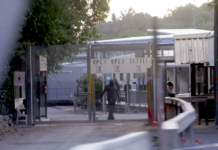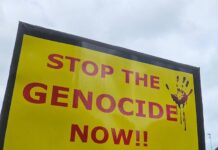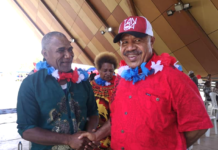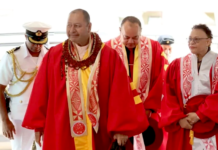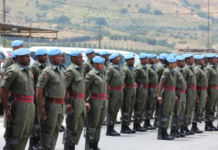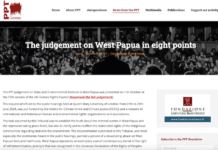
BACKGROUNDER: By Stefan Armbruster
On 1 December each year, in cities across Australia and New Zealand, a small group of West Papuan immigrants and refugees and their supporters raise a flag called the Morning Star in an act that symbolises their struggle for self-determination.
Doing the same thing in their homeland is illegal.
This year is the 62nd anniversary of the flag being raised alongside the Dutch standard in 1961 as The Netherlands prepared their colony for independence.
- READ MORE: Why Indonesia fails to address the West Papua conflict
- Activists call on NZ govt to do more for West Papua
Formerly the colony of Dutch New Guinea, Indonesia controversially took control of West Papua in 1963 and has now divided the Melanesian region into seven provinces.
In the intervening years, brutal civil conflict is thought to have claimed hundreds of thousands of lives through combat and deprivation, and Indonesia has been criticised internationally for human rights abuses.

The Morning Star will fly in Ronny Kareni’s adopted hometown of Canberra and will also be raised across the Pacific region and around the world.
“It brings tears of joy to me because many Papuan lives, those who have gone before me, have shed blood or spent time in prison, or died just because of raising the Morning Star flag,” Kareni, the Australian representative of the United Liberation Movement of West Papua (ULMWP) in Australia told SBS World News.
‘Our right to self-determination’
“Commemorating the anniversary for me demonstrates hope and also the continued spirit in fighting for our right to self-determination and West Papua to be free from Indonesia’s brutal occupation.”
Indonesia’s diplomats regularly issue statements criticising the act, including when the flag was raised at Sydney’s Leichhardt Town Hall, as “a symbol of separatism” that could be “misinterpreted to represent support from the Australian government”.

“It’s a symbol of an aspiring independent state which would secede from the unitary Indonesian republic, so the flag itself isn’t particularly welcome within official Indonesian political discourse,” says Professor Vedi Hadiz, an Indonesian citizen and director of the Asia Institute at the University of Melbourne.
“The raising of the flag is an expression of the grievances they hold against Indonesia for the way that economic and political governance and development has taken place over the last six decades.
“But it’s really part of the job of Indonesian officials to make a counterpoint that West Papua is a legitimate part of the unitary republic.”
The history of the Morning Star
After World War II, a wave of decolonisation swept the globe.
The Netherlands reluctantly relinquished the Dutch East Indies in 1949, which became Indonesia, but held onto Dutch New Guinea, much to the chagrin of President Sukarno, who led the independence struggle.
In 1957, Sukarno began seizing the remaining Dutch assets and expelled 40,000 Dutch citizens, many of whom were evacuated to Australia, in large part over The Netherlands’ reluctance to hand over Dutch New Guinea.
The Dutch created the New Guinea Council of predominantly elected Papuan representatives in 1961 and it declared a 10-year roadmap to independence, adopted the Morning Star flag, the national anthem – “Hai Tanahku Papua” or “Oh My Land Papua” – and a coat-of-arms for a future state to be known as “West Papua”.

The West Papua flag was inspired by the red, white and blue of the Dutch but the design can hold different meanings for the traditional landowners.
“The five-pointed star has the cultural connection to the creation story, the seven blue lines represent the seven customary land groupings,” says Kareni.
The red is now often cited as a tribute to the blood spilt fighting for independence.
Attending the 1961 inauguration were Britain, France, New Zealand and Australia — represented by the president of the Senate Sir Alister McMullin in full ceremonial attire — but the United States, after initially accepting an invitation, withdrew.
Cold War in full swing
The Cold War was in full swing and the Western powers were battling the Russians for influence over non-aligned Indonesia.
The Morning Star flag was raised for the first time alongside the Dutch one at a military parade in the capital Hollandia, now called Jayapura, on 1 December.
On 19 December, Sukarno began ordering military incursions into what he called “West Irian”, which saw thousands of soldiers parachute or land by sea ahead of battles they overwhelmingly lost.
Then 20-year-old Dutch soldier Vincent Scheenhouwer, who now lives on Queensland’s Sunshine Coast, was one of the thousands deployed to reinforce the nascent Papua Volunteer Corps, largely armed with WW2 surplus, arriving in June 1962.
“The groups who were on patrol found weapons, so modern it was unbelievable, and plenty of ammunition,” he said of Russian arms supplied to Indonesian troops.

He did not see combat himself but did have contact with the local people, who variously flew the red and white Indonesian or the Dutch flag, depending on who controlled the ground.
“I think whoever was supplying the people food, they belonged to them,” he said.
He did not see the Morning Star flag.
“At that time, nothing, totally nothing. Only when I came out to Australia (in 1970) did I find out more about it,” he said.
Waning international support
With long supply lines on the other side of the world and waning international support, the Dutch sensed their time was up and signed the territory over to UN control in October 1962 under the “New York Agreement”, which abolished the symbols of a future West Papuan state, including the flag.
The UN handed control to Indonesia in May 1963 on condition it prepared the territory for a referendum on self-determination.
“I’m sort of happy it didn’t come to a serious conflict (at the time), on the other hand you must feel for the people, because later on we did hear they have been very badly mistreated,” says Scheenhouwer.
“I think Holland was trying to do the right thing but it’s gone completely now, destroyed by Indonesia.”
The so-called Act Of Free Choice referendum in 1969 saw the Indonesian military round up 1025 Papuan leaders who then voted unanimously to become part of Indonesia.
The outcome was accepted by the UN General Assembly, which failed to declare if the referendum complied with the “self-determination” requirements of the New York Agreement, and Dutch New Guinea was incorporated into Indonesia.
“Rightly or wrongly, in the Indonesian imagination, unlike East Timor for example, Papua was always regarded as part of the unitary Indonesian republic because the definition of the latter was based on the borders of colonial Dutch East Indies, whereas East Timor was never part of that, it was a Portuguese colony,” says Professor Hadiz.
“The average Indonesian’s reaction to the flag goes against everything they learned from kindergarten all the way to university.
Knee-jerk reaction
“So their reaction is knee-jerk. They are just not aware of the conditions there and relate to West Papua on the basis of government propaganda, and also the mainstream media which upholds the idea of the Indonesian unitary republic.”

In 1971, the Free Papua Movement (OPM) declared the “republic of West Papua” with the Morning Star as its flag, which has gone on to become a potent binding symbol for the movement.
The basis for Indonesian control of West Papua is rejected by what are today fractured and competing military and political factions of the independence movement, but they do agree on some things.
“The New York Agreement was a treaty signed between the Dutch and Indonesia and didn’t involve the people of West Papua, which led to the so-called referendum in 1969, which was a whitewash,” says Kareni.
“For the people, it was a betrayal and West Papua remains unfinished business of the United Nations.”

Raising the flag also raises the West Papua issue on an international level, especially when it is violently repressed in the two Indonesian provinces where there are reportedly tens of thousands of troops deployed.
“It certainly doesn’t depict Indonesia in very favourable terms,” Professor Vedi says.
“The problem for the West Papua [independence] movement is that there’s not a lot of international support, whereas East Timor at least had a significant measure.
‘Concerns about geopolitical stability’
“Concerns about geopolitical stability and issues such as the Indonesian state, as we know it now, being dismembered to a degree — I think there would be a lot of nervousness in the international community.”
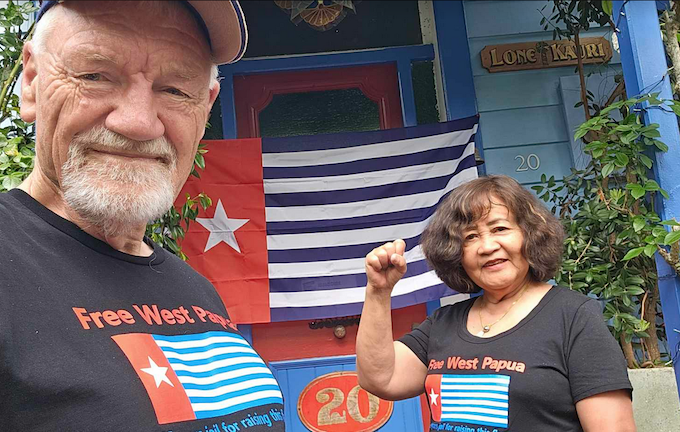
Australia provides significant military training and foreign aid to Indonesia and has recently agreed to further strengthen defence ties.
Australia signed the Lombok Treaty with Indonesia in 2006 recognising its territorial sovereignty.
“It’s important that we are doing it here to call on the Australian government to be vocal on the human rights situation, despite the bilateral relationship with Indonesia,” says Kareni.
“Secondly, Australia is a member of the Pacific Islands Forum and the leaders have agreed to call for a visit of the UN Human Rights Commissioner to carry out an impartial investigation.”
Events are also planned across West Papua.
“It’s a milestone, 60 years, and we’re still waiting to freely sing the national anthem and freely fly the Morning Star flag so it’s very significant for us,” he says.
“We still continue to fight, to claim our rights and sovereignty of the land and people.”
Stefan Armbruster is Queensland and Pacific correspondent for SBS News. First published by SBS in 2021 and republished by Asia Pacific Report with minor edits and permission.


